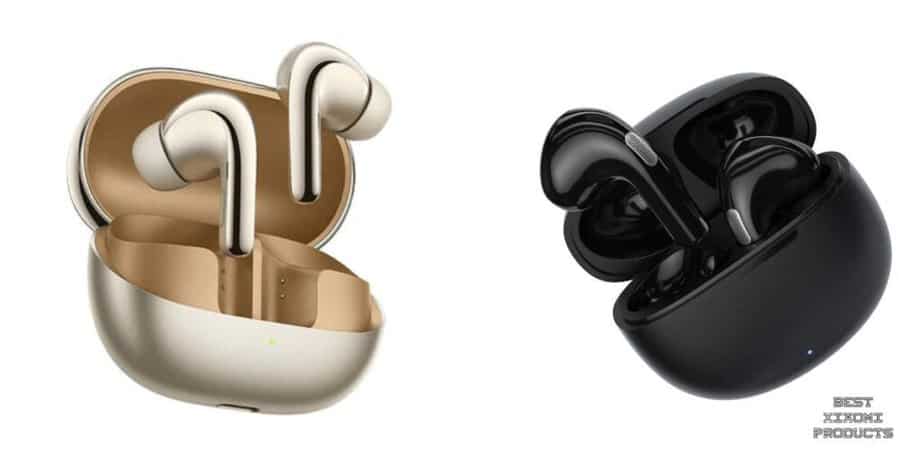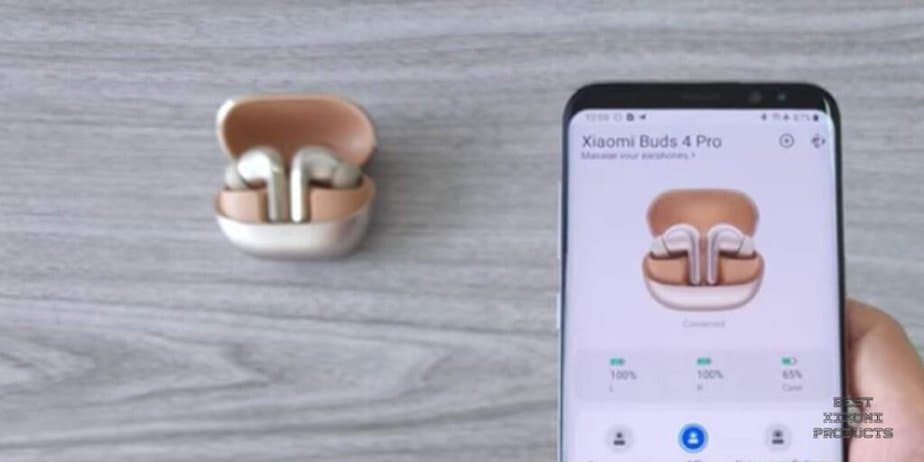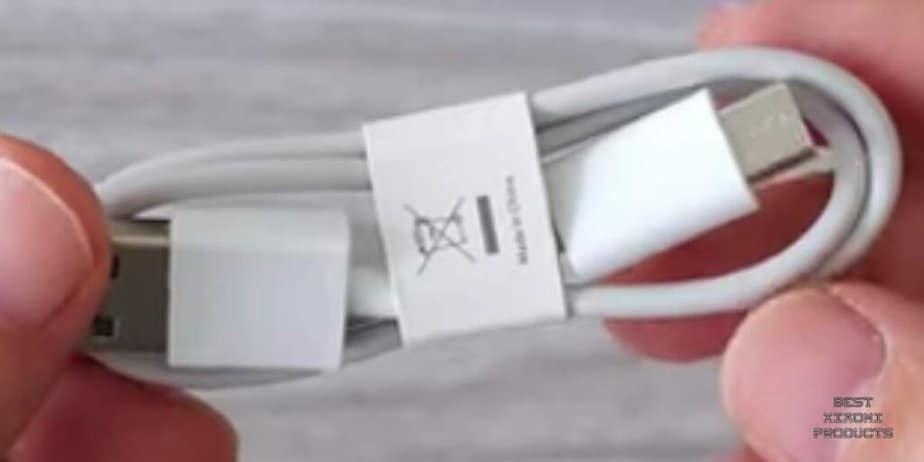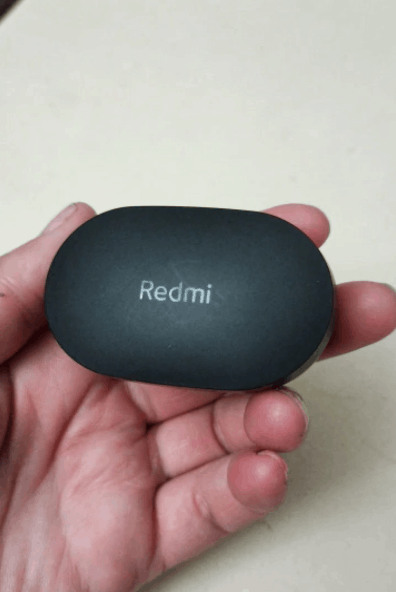
Xiaomi vs QCY | Xiaomi Buds 4 Pro vs QCY T20 AilyPods
Share
Deciding between Xiaomi and QCY, two popular audio brands, can be tricky.
This guide dives into the feature sets of the Xiaomi Buds 4 Pro and QCY T20 AilyPods, unpacking their strengths and weaknesses to help you pick the perfect match for your needs.
We'll compare factors like sound quality, active noise cancellation (ANC), battery life, and price point.
So whether you're a music enthusiast seeking immersive audio or a budget-conscious user prioritizing value, this breakdown will equip you to make an informed decision.
Also Read: Top Rated QCY Earbuds to Buy in 2024 | Are They Worth The Money?
Xiaomi vs QCY : Xiaomi Buds 4 Pro vs QCY T20 AilyPods

In choosing between the Xiaomi Buds 4 Pro and the QCY T20 AilyPods, consider your priorities. The Buds 4 Pro excel with Active Noise Cancellation (ANC), providing superior noise reduction for focused listening in noisy environments.
With larger drivers, they offer richer, balanced sound with deep bass and clear highs. Additionally, they boast longer playtime and extra features like transparency mode and customizable EQ settings.
However, if affordability is key and ANC isn't a must-have, the QCY T20 AilyPods offer decent sound quality at a budget-friendly price.
Ultimately, if you seek premium features and immersive sound, the Xiaomi Buds 4 Pro are the superior choice, while the QCY T20 AilyPods cater to those prioritizing affordability without compromising too much on quality.
Xiaomi Buds 4 Pro vs QCY T20 AilyPods Full Review
Xiaomi Buds 4 Pro vs QCY T20 AilyPods Design and Build
The Xiaomi Buds 4 Pro come in a sleek and stylish black color, exuding a modern and premium vibe. With their in-ear design, they snugly fit in your ears, offering excellent noise isolation.


The IP54 water resistance rating ensures protection against dust and water splashes, making them suitable for workouts or outdoor adventures. Weighing just 5 grams per earbud and 44.5 grams with the charging case, these earbuds are lightweight and portable.
On the other hand, the QCY T20 AilyPods boast a minimalist design with a 32mm stem length and 20mm depth. They are equipped with a 13mm dynamic driver, ensuring immersive and well-balanced sound reproduction.


The earbuds weigh a mere 3.83 grams, making them comfortable to wear for extended periods. Although they lack water resistance certification, the included dustproof protective case cover offers some additional protection.
Xiaomi Buds 4 Pro vs QCY T20 AilyPods Connectivity
Both earbuds utilize True Wireless Stereo (TWS) technology, providing a seamless and hassle-free wireless listening experience.

The Xiaomi Buds 4 Pro feature Bluetooth 5.3, enabling a stable and reliable connection within a range of 10 meters. With support for multiple codecs, including SBC, AAC, and LHDC, you can enjoy high-quality audio across various devices.
Similarly, the QCY T20 AilyPods feature Bluetooth 5.3, ensuring fast and stable connections. While they support AAC and SBC codecs, they lack LHDC support.

However, they compensate with gaming mode functionality, offering low-latency audio for an immersive gaming experience.
Xiaomi Buds 4 Pro vs QCY T20 AilyPods Battery Life
The Xiaomi Buds 4 Pro impresses with a battery life of up to 9 hours on a single charge, allowing you to enjoy extended listening sessions.

The charging case holds an additional 565mAh, providing multiple recharges for a total playtime of approximately 36 hours. The USB Type-C charging port ensures convenient and fast charging.
The QCY T20 AilyPods offers up to 7 hours of playtime on a single charge, ensuring uninterrupted music enjoyment.

With the charging case's 220mAh capacity, you can extend the total playtime to an impressive 32 hours. Although they lack quick charge or wireless charging capabilities, the USB Type-C charge port makes recharging hassle-free.
Additional Features to Consider
While the Xiaomi Buds 4 Pro focuses on core functionality, the QCY T20 AilyPods offer a few additional features.
The QCY companion app provides limited customization options, allowing you to fine-tune your audio settings.

Volume control, although not available by default, can be enabled through the app. The inclusion of a dustproof protective case cover adds an extra layer of convenience and protection.
Xiaomi Buds 4 Pro vs QCY T20 AilyPods Takeaway
Both the Xiaomi Buds 4 Pro and the QCY T20 AilyPods offer impressive features and excellent sound quality.
Ultimately, the choice between these two TWS earbuds depends on your specific preferences and requirements.
If you prioritize water resistance and longer battery life, the Xiaomi Buds 4 Pro would be an excellent choice.
On the other hand, if you value a lightweight and minimalist design, along with the added flexibility of gaming mode and app support, the QCY T20 AilyPods are worth considering.
Xiaomi vs QCY | Airdots 2 vs T1C
Packaging and Inside the Box
Redmi AirDots’ packaging is simple coming in a white and blue box. Similarly, the QCY T1C comes in a white box albeit in a smaller one. The QCY T1C also uses a wooden carton inside the packaging to hold its contents in place.
Inside the box, Redmi AirDots 2 come with the earphone charging case with the AirDots 2 inside, two pairs of earplugs, and a manual. There is no charging cable which may be a bummer.
On the other hand, the QCY T1C has a charging cable included along with the earphone charging case, two pairs of earplugs, and a manual. The earphones are included inside the charging case.
Xiaomi not including the charging case doesn’t look so good as its competition has included it. It is probably a cost-saving measure, but it would have been nice for Xiaomi to include them.
Xiaomi vs QCY - Specifications
| Xiaomi AirDots 2 | QCY T1C | |
| Frequency | 20-20,000 Hz | 20-20,000 Hz |
| Senstivity | 98±3 dB | 108±3 dB |
| Resistance | Up to 32 Ω | Up to 32 Ω |
| Codec Support | SBCAAC | AACLDAC |
| Features | Voice AssistantAutomatic pairingActive noise reduction | Voice assistantApp Quick connectIPX4 water-resistant |
| Connectivity | Bluetooth 5.0 | Bluetooth 5.0 |
| Battery | Up to 12 hours | Up to 20 hours |
Design and Build
When it comes to design, Xiaomi’s AirDots 2 are the clear winner here. They have both, a smaller charging case and smaller earphones compared to the QCY T1C. The smaller size of wireless earphones is a huge factor as they improve convenience when it comes to carrying around and fitting them in small places easily.

The larger size of T1C means that they are uncomfortable compared to the AirDots 2. The T1C can exert pressure on your ear canal after a while. This can be a dealbreaker if you are someone that likes to listen to music for long hours. Both the AirDots 2 and T1C nail it when it comes to the silicone ear tips as they both feel very comfortable and fit well. Both earphones are lightweight though, making them easy to wear, the T1C can be uncomfortable for some due to the size.

One of the benefits of QCY’s T1C being bigger is that they are easy to remove from the case, compared to the AirDots 2, especially when you are hands are a bit sweaty. The T1C’s charging box is also louder when opening and closing it, though this is a personal preference, some may like it loud and some silent. I prefer the silent box of the AirDots 2 as I like to be stealthy.

The earphones themselves have a similar feel and look, with the T1C being slightly larger. Both the AirDots 2 and T1C have opted for physical buttons, to save costs. I have no problems with buttons as they have a tactile feel compared to the capacitive controls on higher-end true wireless earphones. The button on the AirDots 2 is raised while the T1C opts for a flat button that is flush with the earphone itself. Both buttons are easy to use and feel good, you won’t have any complaints about them. The earphones also come with an indicator light, to notify you about connectivity and power.

Both earphones charging case are equipped with micro-USB, which is a huge letdown, USB-C should be the standard for pretty much any new product. Since both earphones suck in this regard, I hope they rectify in the future by equipping USB-C type charging.

Battery
With both earphones weighing so light, it is impressive that both have managed to include 40+ mAh batteries on each earphone. The Redmi AirDots 2 being the lighter ones come with a 40 mAh battery on each earphone while the T1C are equipped with 43 mAh on each earphone. This translates to about 6 hours of music playback for each earphone. And it also means that you will need 2 hours to charge them fully.
Similarly, given the sizes of the case, their battery capacity is impressive too. The Redmi AirDots 2 charging case has a 300 mAh battery in it, which gives an additional 12 hours of music playback. The AirDots 2 charging case also takes 1.5 hours to charge from 0 to 100. Comparatively, the T1C charging case comes with a 380 mAh charging case that can help you boost the overall playback time to 16 hours for the earphones. The T1C charging case will need 2 hours to full charge because of its higher battery capacity.
Battery wise both earphones do a great job, the T1C offers a longer total playback time albeit while the case being bigger. So, you will have to prioritize between size and battery capacity, if you are interested in these earphones. For, me it is a draw when it comes to battery life between the AirDots 2 and T1C.
Sound Quality/Performance
Both the Redmi AirDots 2 and QCY T1C occupy the cheaper, entry-level segment of true wireless earphones. This means that you can’t expect amazing sound quality that will blow your mind. Even then, both Xiaomi and QCY have done a great job getting the most out of these earphones affordable true wireless earphones.
I would say both perform well when it comes to sound quality given the price. But the QCY T1C outperforms the Redmi AirDots 2 a little bit. The T1C is a slightly better-sounding earphone than the Redmi AirDots 2 with more resolution and clarity to the sound.
The T1C does a better job at low frequencies with the bass sounding a lot more natural. Percussion instruments also sound crisper than the AirDots 2. When it comes to treble, both the T1C and the AirDots 2 sound harsh making them less than ideal for metal/rock music. And for midrange, I would place both equally, they do a job for the price, nothing too spectacular.
Overall, the T1C outperforms the AirDots 2 a bit when it comes to sound quality. The bass and midrange are more natural sounding with good detail in the music I tested it with. The AirDots 2 are no slouch when it comes to sound too, the only drawback is that bass sounds a bit muddy. The AirDots 2 makes up for this deficiency by offering a better soundstage over the T1C.
One small quirk I noticed with the AirDots 2 is that the sound is not well balanced, I feel like the right earphone had more thump and crispness in the sound, while the left earphone was struggling to hold up. This is probably a firmware issue, which Xiaomi will hopefully iron out in the future.
So, if you are someone who watches a lot of videos and movies, then the AirDots 2 would be the better choice. But if you want the best music performance from an affordable true wireless earphone, then the T1C are your best bet. So, choose based on your needs.
Buy the Xiaomi AirDots 2 from here
Features
The QCY T1C and the Redmi AirDots 2 are both feature-packed to the brim, and it is surprising how QCY and Xiaomi have managed to offer such a complete package at such affordable prices.
The QCY T1C comes with an AAC codec, very good controls, and offers Bluetooth 5.0, which is great for latency and range. The T1C is also IPX4 rated, making it splash and sweat-resistant, allowing you to wear it during workouts. The T1C are equipped with microphones for calls.
The Redmi AirDots 2 comes with an SBC audio codec, which is not as good as AAC but will do the job. The AirDots 2 also come with Bluetooth 5.0 for the best connectivity. AirDots 2 don’t come with any IP rating but the product page says they are sweat-resistant, so you can use them for workouts too. You get microphones on AirDots 2 too for calls. And the AirDots 2 have native support for voice assistants, making them great for hands-free usage.
Connectivity
Since these are wireless earphones, there will always be a delay when you are using them. The delay is most noticeable in games, for example, there will be a delay between what you see on the screen and when you hear it. The delay for both the AirDots 2 and the T1C here is around 100 ms.
Both earphones use Bluetooth 5.0 making them on par with even the best earphones out there. They are easy to pair and connect with a good connectivity range and low latency. The AirDots 2 do offer a slightly better range over the T1C in my experience though.
Overall, you won’t be let down picking either of these earphones up when it comes to connectivity, as they are very evenly matched with a very slight advantage to the AirDots 2.
Xiaomi vs QCY - Conclusion
When it comes to budget products, there are always caveats that break the experience in some way, this means you will have to adjust and just live with the problem. That’s not the case for the Redmi AirDots 2 or the T1C. These are some of the most complete true wireless solutions for the price I have ever tested.
They sound good for the price, have good connectivity, come with all the necessary features, and are very affordable. Both have excellent battery life, are lightweight, and feel good in the hand. There are glaring faults and they work every time I need them to.
In the end, it’s all about personal preference, if you need a decent pair of truly wireless earphones, both the T1C and the AirDots 2 are an amazing choice to choose from. The T1C sounds a bit better while being a little uncomfortable. On the other hand, the AirDots 2 offer better connectivity, better surround sound, and is more convenient for day-to-day use. You won’t feel let down picking either, there is no clear winner. They are both excellent products for the price.
Buy the Xiaomi AirDots 2 from here
FAQs
Is QCY better than Xiaomi?
Is QCY a Xiaomi brand?
Where can I find QCY headphones?
Also Read: